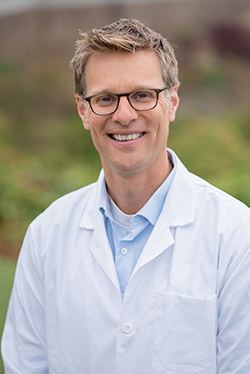Michael Hope, MD Shares Information on Cardiovascular Imaging at the SFVAMC
 February is Heart Health Month, an important reminder for everyone to take control of their heart health. Michael Hope, MD is a UCSF radiologist whose focus is imaging of the heart and lungs. He is also a professor in residence (Cardiac & Pulmonary Imaging section) and chief of radiology at the San Francisco Veterans Administration Medical Center (SFVAMC). We recently asked him to share more about cardiovascular imaging and the role of radiologists in diagnosing and treating heart disease in veterans.
February is Heart Health Month, an important reminder for everyone to take control of their heart health. Michael Hope, MD is a UCSF radiologist whose focus is imaging of the heart and lungs. He is also a professor in residence (Cardiac & Pulmonary Imaging section) and chief of radiology at the San Francisco Veterans Administration Medical Center (SFVAMC). We recently asked him to share more about cardiovascular imaging and the role of radiologists in diagnosing and treating heart disease in veterans.
According to Dr. Hope, UCSF radiologists perform a full range of cardiovascular imaging at the SFVAMC. This includes:
- CT calcium scoring
- Gated CT angiography (CTA) for coronaries, TAVR, left atrial mapping, and ascending aortic aneurysm (AAA)
- Nuclear medicine stress testing for ischemic disease
- Cardiac MRI to determine good candidates for coronary bypass grafting and then evaluating for other etiologies of heart failure
“Of note, calcium scoring has become increasingly used to identify and risk stratify coronary disease, and TAVR CTA is our mostly commonly ordered study as many of our older veterans with severe aortic stenosis benefit from this minimally invasive approach,” says Dr. Hope.
Transcatheter aortic valve replacement (TAVR) is a minimally invasive procedure for treating aortic valve stenosis. For many patients, TAVR is an equally effective, much less invasive alternative to open-heart surgery. While TAVR was originally developed specifically for patients at high risk with open-heart surgery, it's now approved for anyone with severe aortic stenosis.
 “As radiologists, we are the gatekeepers for TAVR, determining who is a good candidate and sizing the valves,” says Dr. Hope. “This has revolutionized cardiac surgery and intervention in the last decade, and our veterans who otherwise are not surgical candidates have really benefited.”
“As radiologists, we are the gatekeepers for TAVR, determining who is a good candidate and sizing the valves,” says Dr. Hope. “This has revolutionized cardiac surgery and intervention in the last decade, and our veterans who otherwise are not surgical candidates have really benefited.”
Heart disease is the leading cause of death in the U.S. It is also the leading cause of hospitalization and a disease that brings many veterans into the VA health care system. Much of the evaluation and treatment of heart disease in veterans focuses on things outside of imaging including risk factor modification and communication about treatment protocols. According to Dr. Hope, Radiology gets involved when pathology is highly suspected or known, especially if an intervention is considered.
“Occasionally, a radiologist can incidentally find heart disease on imaging for other reasons such as coronary or aortic valve disease on lung cancer screening,” he says. “Minimally invasive interventions have made Radiology more relevant, as in the case of TAVR which is crucial to pre-procedure work-up.”
Learn more about the Cardiac & Pulmonary Imaging and Veterans Administration Medical Center at UCSF Radiology.
